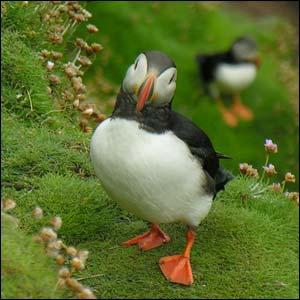baked puffins... not just a fantastic breakfast cereal

The National Trust for Scotland hopes the previously unseen photographs, diaries and cultural objects will give an insight into life on the islands.
Evidence suggests that St Kilda was inhabited as early as 3,000BC. The final 36 inhabitants abandoned their homes in August 1930.
The exhibition is being held at Wemyss House, Charlotte Square, Edinburgh.
Admission to the exhibition, which runs until 31 August, is free.
Harsh environment
It comes weeks after St Kilda was awarded Unesco (United Nations Educational, Scientific and Cultural Organisation) World Heritage Site status for its cultural significance.
The listing made it one of only 24 sites in the world to have been recognised by Unesco for both cultural and natural importance.
It now ranks alongside Ayers Rock in Australia, Mount Athos in Greece and Machu Picchu in Peru.
Despite its reputation as a harsh environment, surveys have uncovered evidence that suggests St Kilda was inhabited 5,000 years ago.
The main island, Hirta, once supported Britain's most remote community, with the inhabitants surviving for centuries on the seabird population, subsistence agriculture and eating dishes such as baked puffin.
By the 1920s the population had fallen from 200 to 36, and this decline, along with poverty and severe weather, led to them abandoning their homes on 29 August 1930 and moving to the mainland.
The National Trust for Scotland has owned St Kilda since 1957.




0 Comments:
Post a Comment
<< Home